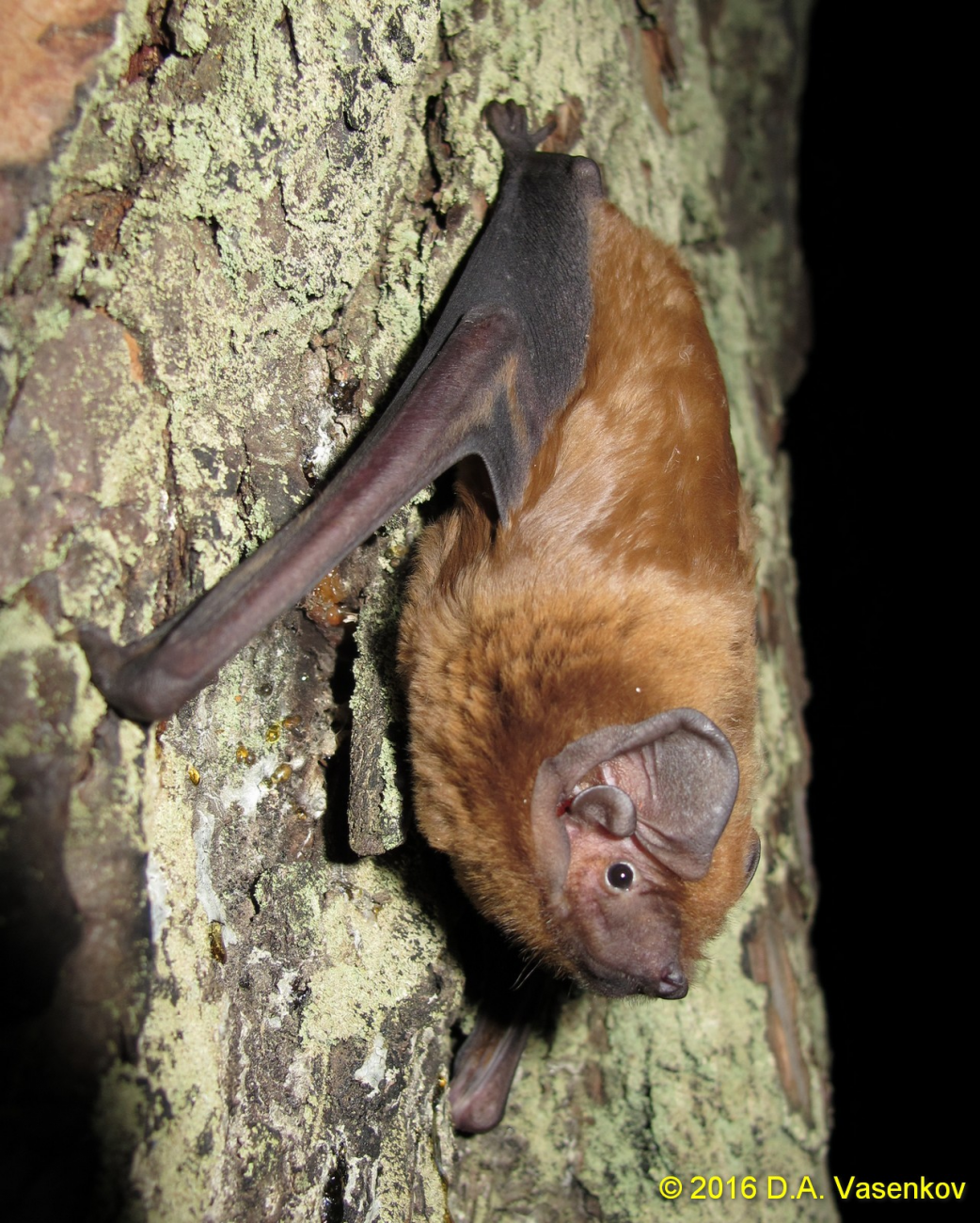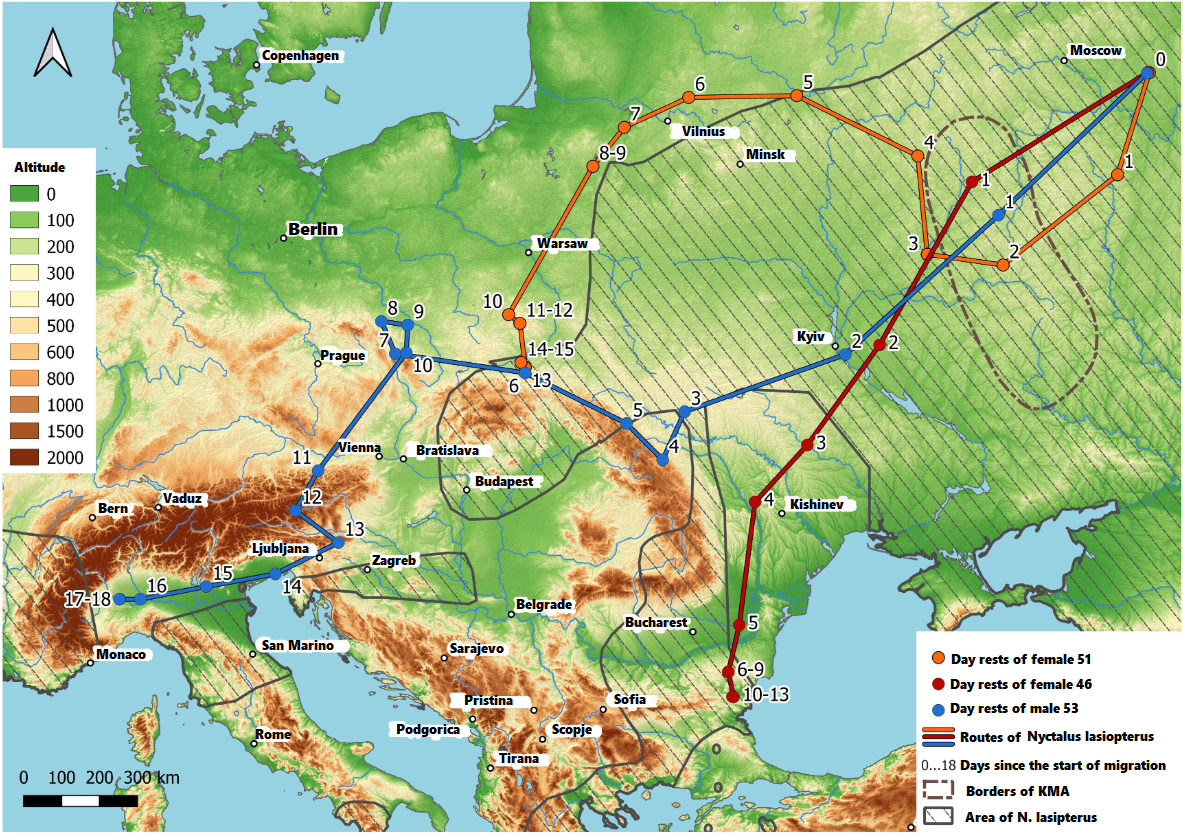
As a result of the studies carried out in 2020-2021 research has provided unique data that allows us to expand our knowledge about the scale and routes of movement of flying mammals - chiropterans. For the first time in world science, long-distance seasonal flights of a migratory bat species in temperate latitudes have been traced on a daily basis almost to their wintering grounds. The research was carried out by researchers from the Institute of Ecology and Evolution of the Russian Academy of Sciences D.A. Vasenkov, N.V. Sidorchuk, RAS academician V.V. Rozhnov and MSU employee N.S. Vasilyev. Migrating bats, greater noctule bats (Nyctalus lasiopterus), marked with GPS-GSM trackers, made a long flight in the fall from their summer habitats in the Meshchera National Park (Vladimir Region) towards their wintering grounds and almost reached them. These are the largest bats in Europe (weighing more than 40 g), but even for them, the battery life of GPS-GSM trackers was limited to 2-3 weeks of operation in the mode of daily transmission of location data. During the long-distance flight, the animals crossed several European countries, flying from 1754 to 3360 km (distance in a straight line from 1459 to 2515 km). The longest flight was made by a male whose GPS-GSM tracker stopped transmitting data in Italy, 100 km from the border with France. The trackers of two females stopped transmitting data in southern Poland and Bulgaria. During these movements, the male greater noctule set two records among bats, both in flight distance from summer habitats to wintering grounds, and in daily flight range (445 km per night).

The data obtained significantly expand our knowledge of the ecology of bats, the routes of their seasonal movements and emphasize the importance of preserving natural landscapes throughout the European continent for the survival of migratory bat species.
The research materials were published in the journal “Reports of the Russian Academy of Sciences. Life Sciences” and in its international version “Doklady Biological Sciences”.
Vasenkov D.A., Vasiliev N.S., Sidorchuk N.V., Rozhnov V.V. Autumn Migration of Greater Noctule Bat (Nyctalus Lasiopterus): through Countries and over Mountains to a New Migration Flight Record in Bats. Reports of Russian Science. Sciences about life. - 2023. - Т. 513. - №1. - C. 564-569. doi: 10.31857/S2686738923700403
Vasenkov D.A., Vasiliev N.S., Sidorchuk N.V., Rozhnov V.V. Autumn Migration of Greater Noctule Bat (Nyctalus Lasiopterus): through Countries and over Mountains to a New Migration Flight Record in Bats. Dokl Biol Sci 513, 395–399 (2023). https://doi.org/10.1134/S0012496623700746
